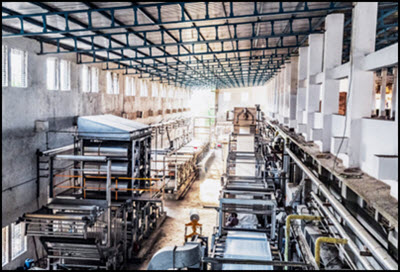Mitigating Human Error & Operational Risk By Creating A Robust Automation Roadmap
Increasingly, companies and manufacturers are turning to automation and Robotic Process Automation (RPA) to reduce IT staff time, bolster efficiency and create an environment conducive to the successful implementation of digital transformations. Additionally, the cost of human error is quite high, and automation has proven successful in ensuring a company’s bottom line remains in the green. In fact, the Ponemon Institute, an organization that conducts independent research on data protection and emerging information technologies, reports that human error accounts for about 22 per cent of unplanned outages, and that this number continues to hold steady. Thus, a well-planned and robust automation road map can not only help improve the efficiency of company IT systems, it can also mitigate the effects of human error, if not eliminate it entirely.

This roadmap must clearly outline expectations, modes of implementation and corrall key stakeholders. Here is an overview of important automation elements and best practices for creating this roadmap.
Overcoming Human Error
While many have the best intentions when completing a task, error is often inevitable. Automation can identify smaller problems before they snowball into larger, more costly ones. Meaning, if an employee missed the problem in the early stages, automation can help eliminate risk, while additionally ensuring consistency across the work environment preventing cascade failures. Further, automation works to improve the accountability of a system’s health and provides a clear timeline of previous audits. This means CIOs and IT staff can view a comprehensive break-down of what has occurred and when, flagging any anomalies. A system’s health can be analyzed using machine learning and AI to determine CPU cycles and usage, or increased storage demands to allow a company to safely scale accordingly.
Scaling & Security
As enterprises make plans to scale up, the risk for human error increases accordingly. Often, scaling is synonymous with IT departments being stretched too thin, thus increasing security threats. Automation processes ensure consistency across IT infrastructure through automated monitoring. Once a process is perfected from a security standpoint, it can be automated to replicate many times over without the risk of human error interfering. Automated security processes allow security operations teams to rely on rules and pre-built playbooks to help guide investigations workflows and responses when dealing with security threats. These solutions gather myriad data from similar security examples to guide the implementation of solutions for a less-experienced analyst.
Adding Business Value & Informing Key Stakeholders
As technology advances, companies are finding it increasingly difficult to maintain their competitive edge within the digital business culture. There’s no doubt that automation can free up time for IT departments to focus on operational and customer service improvements, and that it bolsters productivity and controls costs by automating processes and boosting efficiency. Additionally, integrating reporting into process automation ensures that key stakeholders are kept informed throughout all aspects of the automation process. It allows employees to make decisions and do their jobs using information they need delivered consistently and on time.
This consistency is critical for code development, documentation, processes and configuration. It not only increases security, but simultaneously decreases the time and expense related to troubleshooting. All of these aspects work in conjunction to provide an enterprise with greater business value, help them retain their competitive edge and protects their bottom line.
Creating the Roadmap
Automation is less about purchasing a ready-made solution that promises to solve a company’s problems, and more about comprehensive planning and careful implementation. When building an automation roadmap, ensure to consider the following:
- Identify projects that can stand to gain the most from automation and prioritize them based upon the impacts they will have on your business goals. To start off on the right foot, you may choose to identify a few easy wins for initial success.
- Set measurable goals and define what success looks like upfront. These can include such goals as: reducing response time to security incidents, or to minimize support tickets by a certain percentage. Ensure you can measure these goals and define the data points you will use to measure them. You should also ensure you’re able to get key stakeholders to buy into your project to garner support and gain legitimacy.
- Build the right team. To ensure automation processes are built correctly from the outset, you will need to assemble a team comprised of people who are knowledgeable and experienced in automation and the tasks to which you are applying the automation. They should understand current automation trends and external drivers of success.
Undoubtedly, automation reduces the chance for human error, ensures consistency, aids in adherence to process and compliances, and provides increased security by eliminating the mistakes that lead to misconfigured systems. As enterprises increasingly turn to automation to bolster the efficiency and productivity of their systems, so too will the need for automation technicians increase. Manufacturers will rely upon knowledgeable and experienced technicians to spearhead and lead their automation efforts, which is why there is no better time to consider an automation technician certificate to supplement your credentials and kickstart your career.
